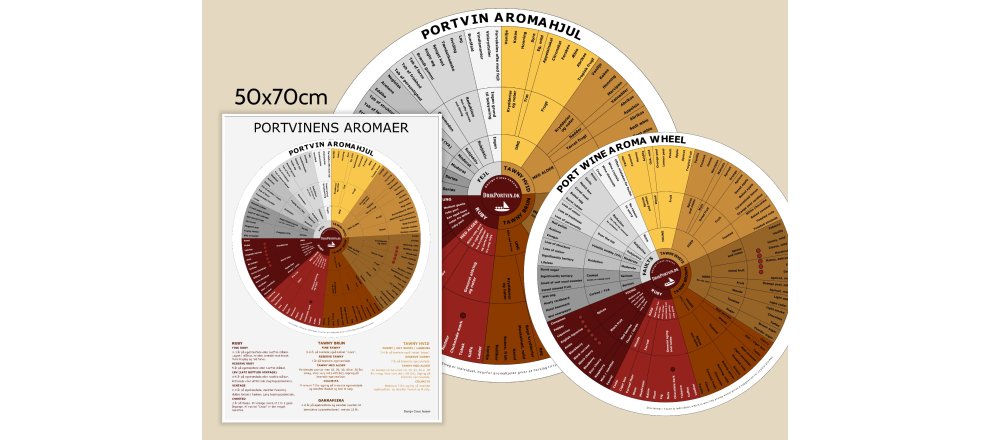One of the most difficult things about enjoying port wine is describing in words, the aromas of the port wine you are tasting, especially for beginners, but even many experienced port wine connoisseurs can find it difficult to put into words, what they are tasting. Not because they don't know what a given port wine should taste like, but more because they have never delved into the aromas that port wine offers.
There are many aroma wheels developed specifically for red or white wine, but these do not fit the description of port wine's aromas. Our aroma wheel has therefore been developed specifically for port wine's three most common categories as well as the most common faults and on the basis of numerous tastings, notes and evaluations. The purpose of the aroma wheel is to create a better overview, especially for beginners, of the most typical aromas that a port wine offers. It can therefore be used to describe the aroma and taste of a port wine. It does not describe the physical characteristics of whether the port is powerful, tannic, full bodied, smooth, or complex.
The port wine categories on which the aroma wheel concentrates are ruby, brown tawny and white tawny. Common to all three categories is that they are described as young and with age. It is therefore possible to find notes from both fields if you enjoy a port that lies somewhere between a young and an aged one. A port wine with age is very individual and cannot be determined unambiguously, as they develop very differently, e.g. depending on year of harvest, masculinity and house. For an example, let's look at a vintage (ruby) that matures quickly in the bottle, that will perhaps already after 20 years begin to acquire aromas from ruby with age.
In order not to make the aroma wheel too unmanageable, complex and with too many repetitions, it is deliberately not divided into primary, secondary and tertiary aromas. The primary aromas are added to the port wine from the grape variety and most often belong to the young port wines, while the secondary and tertiary aromas develop from oak or general aging and with the maturation of the port wine.
Small circles appear with colors from respectively young ruby and ruby with age and the purpose of these circles is an attempt to describe the aromas a port wine can also have from the other categories. For ruby with age, circles appear under brown tawny with age, as these get more prominent tawny aromas over time, what we also call tawnified port wine.
Here you find links for dowload of the Aroma wheel:



